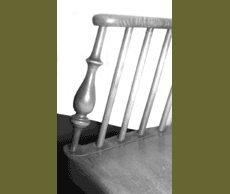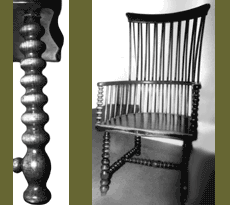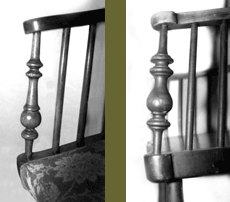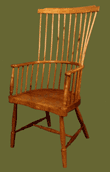The Early Chairs.
The turnings are simple, elegant and under stated. The seat slab is 50mm thick
and is contoured to the body. The arm is formed from a bent branch split,
trimmed to the correct curve and scarf jointed at the back. The back is formed
with between 7 and 11 spindles or spars, never tapered, brought through the
arm and let into a head rail. The seat is angled back for comfort and the
back further angled to provide optimum sitting position. Small pegs are used
to ensure the critical joints remain tight. These chairs had an early varnish
which over the years has deteriorated to black.

Detail of a typical arm pillar ca. 1860
The Intermediate Chairs.
The front arm pillars have more elaborate turnings almost presaging the onset
of the Victorian Fashions. The leg turnings remain simple.
The Victorian Chairs.
The ornate front arm pillar becomes the norm and the leg turnings become more
complex. The latest finish of Button Shellac becomes the standard. Pegging
joints is no longer practised. The seat slabs are left flat. More and more
have arm bows cut from the plank rather than from a branch. The necessary
increase in thickness loses much of the original elegance. The number of spars
stabilises at 10.




